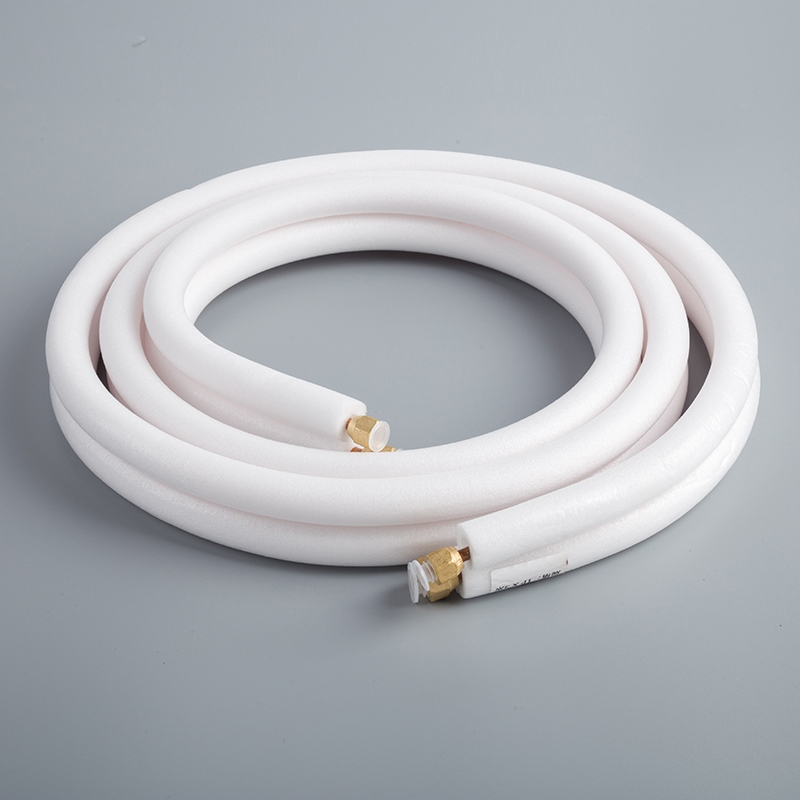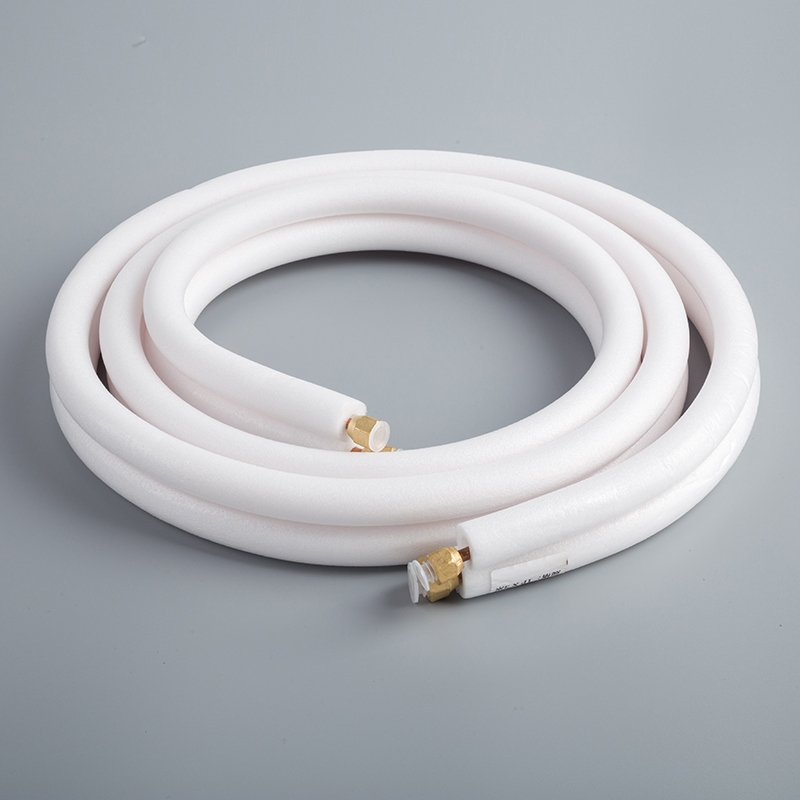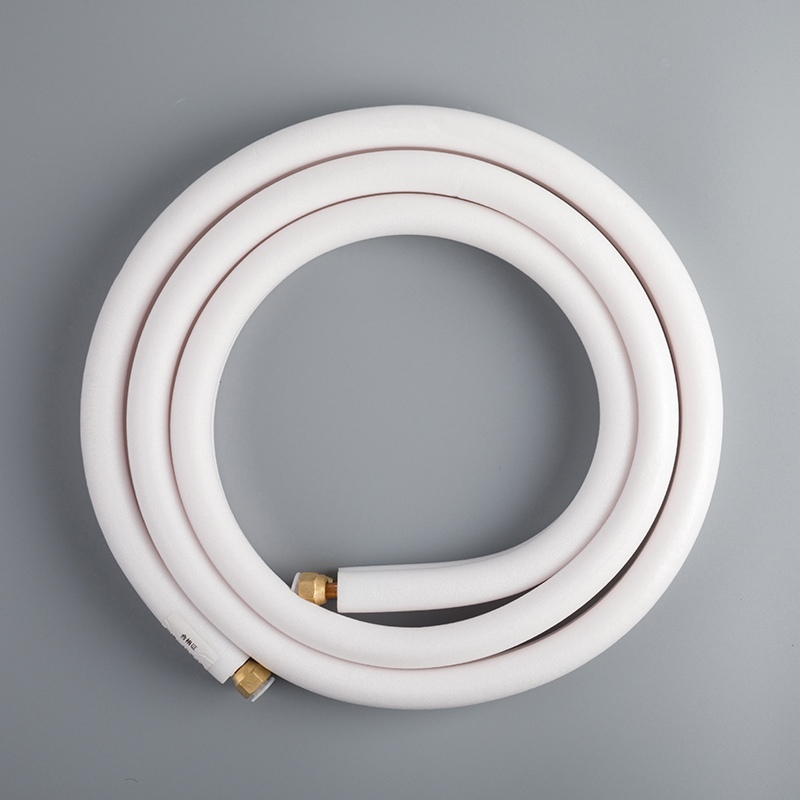Steps to Clean and Restore Corroded Copper Pipes in Air Conditioners

Air conditioner copper pipe corrosion can significantly impact your system's performance and lifespan. Corrosion weakens the copper, leading to refrigerant leaks and reduced cooling efficiency. Ignoring this issue may result in costly repairs or even system failure.
Cleaning and restoring corroded pipes improves your air conditioner's efficiency and saves you money on energy bills. Proper maintenance also extends the life of the copper pipes, ensuring your system operates smoothly for years. Addressing air conditioner copper pipe corrosion early prevents further damage and keeps your cooling system reliable.
Key Takeaways
Spot corrosion early by checking for color changes, small holes, or strange sounds in your air conditioner. Regular checks can stop problems from getting worse.
Clean gently using homemade mixes like vinegar and salt for mild corrosion. For tough spots, use chemical cleaners but handle them carefully.
After cleaning, make sure pipes are fully dry to stop more corrosion. Rinse with baking soda water to remove leftover acids from cleaners.
Spray anti-corrosion products and cover pipes with insulation to keep out moisture. These steps help your copper pipes last longer.
Check your air conditioner at least two times a year to keep it working well and avoid expensive fixes.
Identifying Air Conditioner Copper Pipe Corrosion

Visible Signs
Discoloration (green, black, or white spots)
Corroded copper pipes often display discoloration. You may notice green corrosion, which forms due to prolonged exposure to moisture and air. Black or white spots can also appear, indicating chemical reactions with pollutants or volatile organic compounds. These visible signs suggest that the protective layer on the copper has deteriorated, leaving it vulnerable to further damage.
Environmental factors like water chemistry and soil conditions can accelerate discoloration. Acidic water or high chloride content can corrode copper pipes faster. Similarly, highly acidic soils can degrade pipes, especially in outdoor units. Regularly inspecting for these signs helps you catch corrosion early.
Pitting or Surface Damage
Pitting corrosion creates small, deep holes on the copper surface. This type of damage weakens the pipe structure and increases the risk of refrigerant leaks. Surface damage, such as scratches or abrasions, can also expose the copper to corrosive elements. Galvanic corrosion, caused by contact between dissimilar metals like copper and aluminum, often leads to rapid pitting in the presence of moisture.
Performance Issues
Reduced Cooling Efficiency
Corroded copper pipes can significantly reduce your air conditioner's cooling efficiency. Refrigerant leaks caused by corrosion lower the system's ability to cool your space effectively. As a result, the air conditioner works harder, consuming more energy and increasing your utility bills.
Refrigerant Leaks or Unusual Noises
Corrosion often creates tiny cracks or holes in the pipes, leading to refrigerant leaks. These leaks not only affect cooling performance but also harm the environment. You might also hear unusual noises, such as hissing or bubbling, which indicate escaping refrigerant. Addressing these issues promptly prevents further damage to your system.
Inspection Tools
Flashlight and Magnifying Glass
A flashlight and magnifying glass are essential for spotting corrosion. Use the flashlight to illuminate hard-to-reach areas and the magnifying glass to examine the copper surface closely. Look for green corrosion, pitting, or discoloration that might not be visible to the naked eye.
Moisture Detection Tools
Moisture detection tools help you identify areas prone to corrosion. These tools measure humidity levels around the pipes, allowing you to pinpoint spots where moisture might accelerate copper pipe corrosion. Always wear safety gear, such as gloves and goggles, when using these tools to protect yourself during inspections.
Step-by-Step Cleaning Guide for Corroded Copper Pipes

Preparation
Gather tools and materials (e.g., gloves, cleaning agents, brushes)
Before you begin cleaning, gather all the necessary tools and materials. Essential items include Scotchbrite pads for light corrosion, steel wool for tougher contaminants, and rubber sanding pads for interior surfaces. Pipe brushes and flexible sanding tools help clean hard-to-reach areas. For heavy corrosion, specialty drill attachments can be effective. You’ll also need natural cleaning agents like vinegar, baking soda, lemon juice, and salt. Don’t forget protective gloves and goggles to ensure your safety during the process.
Turn off the air conditioner and disconnect power
Always prioritize safety by turning off the air conditioner and disconnecting its power supply. If your system connects to a water source, consider shutting off the water supply to avoid accidental leaks. This step prevents electrical hazards and ensures a safe working environment.
Cleaning Methods
Homemade Solutions (e.g., vinegar, salt, and flour paste)
Homemade remedies are a cost-effective way to clean copper pipes. Create a paste using vinegar, salt, and flour. Apply it to the corroded areas and let it sit for 15-20 minutes. The vinegar’s acidity helps remove rust and tarnish, while the salt acts as an abrasive. Rinse thoroughly with water to clean the affected area.
Chemical Cleaners for Severe Corrosion
For severe corrosion, chemical cleaners may be necessary. Choose a cleaner specifically designed for copper. Follow the manufacturer’s instructions carefully to avoid damaging the pipes. Use a pipe brush to scrub the cleaner into the corroded spots. Always wear gloves and goggles when handling chemicals.
Mechanical Techniques (e.g., wire brushes, sandpaper)
Mechanical methods are ideal for stubborn deposits. Use wire brushes or sandpaper to remove rust and tarnish. For interior surfaces, pipe brushes or rubber sanding pads work well. Specialty drill attachments can help with heavy corrosion. Apply gentle pressure to avoid scratching or damaging the copper surface.
Rinsing and Drying
Rinse with water mixed with baking soda to neutralize acids
After cleaning, rinse the pipes thoroughly with water mixed with baking soda. This neutralizes any remaining acids from the cleaning agents. Proper rinsing is crucial, especially if you plan to solder the pipes later. Residues can interfere with the soldering process.
Ensure pipes are completely dry to prevent further corrosion
Dry the pipes completely to prevent moisture from causing further corrosion. Use a clean, dry cloth to wipe the exterior. For interior surfaces, compressed air can help remove any trapped moisture. Ensuring the pipes are dry will protect them from future damage.
Safety Precautions for Cleaning Copper Pipes
Cleaning copper pipes requires careful attention to safety precautions. Following these steps ensures your safety and protects the pipes from unnecessary damage.
Chemical Safety
Wear protective gloves and goggles
When working with cleaning agents, always wear protective gloves and goggles. These items shield your skin and eyes from harmful chemicals. Even natural cleaners like vinegar or lemon juice can irritate sensitive skin. Gloves also provide a better grip, reducing the risk of accidents while handling tools or pipes.
Work in a well-ventilated area
Always clean copper pipes in a well-ventilated area. Many cleaning agents release fumes that can be harmful when inhaled. Open windows or use fans to improve airflow. If you are working indoors, consider wearing a mask to minimize exposure to any lingering vapors. Proper ventilation ensures a safer cleaning environment.
Preventing Pipe Damage
Use gentle cleaning techniques
To avoid damaging the copper surface, use gentle cleaning methods. Some effective techniques include:
Applying a vinegar and baking soda paste to the pipe, letting it sit for 10-15 minutes, and scrubbing gently with a soft cloth or brush.
Using a potato dipped in baking soda or salt to rub tarnished areas. The natural acids in the potato clean oxidation without scratching the surface.
Rubbing a lemon sprinkled with salt over the copper. The lemon’s acidity dissolves corrosion, while the salt removes tarnish.
Creating a paste with lemon juice and baking soda for stubborn spots.
These methods clean effectively while preserving the integrity of the copper pipes.
Avoid excessive force when scrubbing
Scrubbing too hard can scratch or weaken the copper. Use light pressure and soft tools like cloths or brushes. For tougher spots, let the cleaning solution sit longer instead of applying more force. This approach prevents unnecessary wear and tear on the pipes.
By following these safety precautions, you can clean your copper pipes effectively while protecting both yourself and the pipes.
Post-Cleaning Procedures and Preventive Measures
Inspecting for Damage
Check for leaks or weak spots
After cleaning, inspect the copper pipes for any leaks or weak spots. Look closely at the joints, seams, and areas previously affected by corrosion. Use a flashlight to illuminate hard-to-see areas. If you notice any pinholes or cracks, address them immediately to prevent refrigerant loss and further damage.
Apply sealant if necessary
For minor leaks or weak spots, apply a waterproof silicone sealant. This creates a durable barrier that prevents further leaks. Generously coat the joints, pinholes, and seams with the sealant to ensure complete coverage. This step provides extra protection and reinforces the integrity of the copper pipes.
Applying Protective Coatings
Use anti-corrosion sprays or coatings
To protect the cleaned copper pipes, apply a corrosion inhibitor such as an anti-corrosion spray. These sprays enhance the copper's resistance to moisture and pollutants. Hydrophilic coatings, for example, improve the wettability of the copper surface, reducing friction and preventing localized corrosion. They are especially effective in environments prone to pitting or crevice corrosion, such as salty or underground conditions.
Wrap pipes with insulation to reduce moisture exposure
Insulating the copper pipes helps minimize moisture exposure, which is a leading cause of corrosion. Use materials like foam sleeves, rubber wraps, or fiberglass insulation. Foam sleeves are lightweight and easy to install, making them ideal for residential use. Rubber wraps are flexible and moisture-resistant, perfect for high-humidity areas. Fiberglass insulation offers superior thermal resistance but requires more effort to install. Choose the material that best suits your environment to ensure long-term protection.
Maintenance Tips
Schedule regular inspections
Regular maintenance is key to keeping your air conditioner in top condition. Schedule inspections at least twice a year to check for signs of corrosion, leaks, or damage. Early detection allows you to address issues before they escalate, saving you time and money.
Keep the air conditioner in a clean, dry environment
The environment around your air conditioner plays a significant role in preventing copper pipe corrosion. Keep the unit in a clean, dry area to reduce exposure to moisture and pollutants. Avoid placing it near sources of humidity, such as water heaters or laundry rooms. A well-maintained environment ensures the longevity of your system and reduces the need for frequent repairs.
By following these steps, you can protect your copper pipes and maintain your air conditioner's efficiency. Regular maintenance and preventive measures not only extend the life of your system but also save you from costly repairs in the future.
Addressing copper pipe corrosion in your air conditioner offers long-term benefits. It extends the lifespan of your unit and ensures efficient performance. Early detection and maintenance prevent leaks and reduce costly repairs.
To avoid future corrosion, follow these preventive measures:
Address leaks or issues promptly.
Install a water softener to reduce mineral buildup.
Run water regularly through fixtures to prevent stagnation.
Schedule annual plumbing inspections for early issue detection.
By taking these steps, you protect your system and maintain its reliability for years to come.
FAQ
What causes copper pipes in air conditioners to corrode?
Copper pipes corrode due to exposure to moisture, pollutants, and chemicals. High humidity, acidic water, and contact with dissimilar metals accelerate the process. Regular inspections help you identify these factors early and prevent damage.
Can I clean corroded copper pipes without professional help?
Yes, you can clean them using homemade solutions like vinegar and salt or mechanical tools like brushes. Follow safety precautions, such as wearing gloves and goggles, to protect yourself. For severe corrosion, consult a professional.
How often should I inspect copper pipes for corrosion?
Inspect copper pipes at least twice a year. Regular checks help you spot early signs of corrosion, such as discoloration or leaks. Early detection prevents costly repairs and extends the life of your air conditioner.
Are chemical cleaners safe for copper pipes?
Chemical cleaners are safe if used correctly. Always follow the manufacturer’s instructions and wear protective gear. Avoid overusing chemicals, as they can damage the copper surface. For mild corrosion, opt for natural cleaning methods.
How can I prevent copper pipe corrosion in the future?
Apply anti-corrosion coatings and wrap pipes with insulation to reduce moisture exposure. Keep the air conditioner in a dry, clean environment. Schedule regular maintenance to address issues early and ensure long-term protection.
Tip: Regular maintenance and preventive measures save you money and keep your air conditioner running efficiently.
See Also
The Impact of Pure Copper Pipes on Air Conditioning
Reasons to Opt for Copper Pipes in Air Conditioning
Key Benefits of Copper Pipes for Air Conditioning Systems


